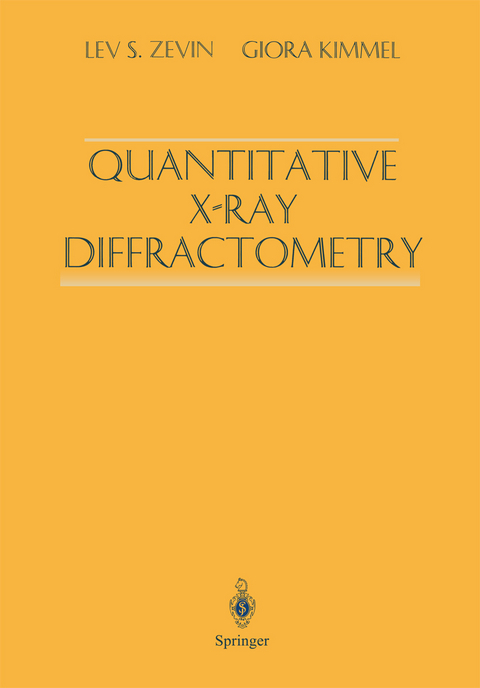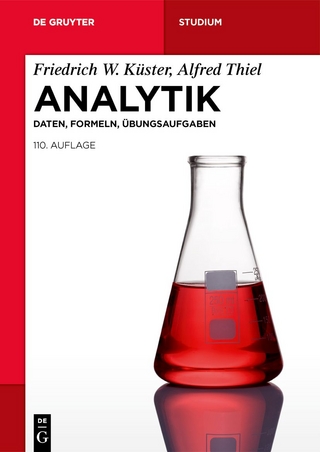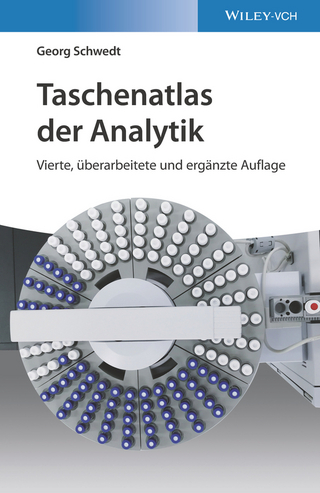
Quantitative X-Ray Diffractometry
Springer-Verlag New York Inc.
978-1-4613-9537-9 (ISBN)
One of the most important techniques for determining the atomic structure of a material is X-ray diffraction. One of the great problems of the technique, however, is the fact that only the intensity of the diffraction pattern can be measured, not its phase. The inverse problem, of determining the structure from the pattern thus contains ambiguities that must be resolved by other means. Quantitative X-ray analysis provides one way to resolve this phase problem: mixing the material in question with a material of known structure yields interferences that can be analyzed to yield the unknown phases. Invented in 1916, but little used at the time, the technique has seen a recent revival due to the development of extremely precise X-ray diffractometers coupled with powerful computers.
1 Introduction.- 1.1 Phase analysis—when and why.- 1.2 Phase analysis as an analytical method.- 1.3 History of quantitative X-ray phase analysis.- 2 Physical basis.- 2.1 Interaction of X-rays with material.- 2.2 Intensity in powder diffraction.- 2.3 Background—angle variation and intensity.- 2.4 X-ray diffraction by nonhomogeneous polycrystalline materials.- 2.5 Orientation of reflecting particles.- 3 Geometric aspects of X-ray diffractometry.- 3.1 Geometric schemes in X-ray diffractometry.- 3.2 Diffractometers with Bragg-Brentano reflection focusing.- 3.3 Diffractometers with Seeman-Bohlin reflection focusing.- 3.4 Transmission technique with constant specimen-detector distance (Bragg-Brentano transmission analog).- 3.5 Transmission technique with an invariant focusing circle (Guinier diffractometer or the Seeman-Bohlin transmission analog).- 3.6 Debye-Sherrer geometry.- 3.7 Powder diffractometry with synchrotron radiation.- 3.8 Position-sensitive detectors in powder diffractometry.- 4 Methodology of quantitative phase analysis.- 4.1 Introduction.- 4.2 Analysis of samples with a known mass absorption coefficient (diffraction-absorption technique).- 4.3 Internal standard method.- 4.4 Doping method in quantitative X-ray diffractometry.- 4.5 Dilution Method.- 4.6 Full-phase analysis of the n-phase sample.- 4.7 Reference intensity ratios in quantitative analysis.- 4.8 Diffraction patterns with overlapping peaks—full diffraction pattern approach.- 4.9 Implementation of calculated powder patterns in QXRD.- 4.10 Standardless Methods.- 4.11 Combination of X-ray diffraction and chemical data.- 4.12 Crystallinity of polymers.- 4.13 Analysis of low-mass samples.- 5 Practical aspects of quantitative phase analysis.- 5.1 Introduction.- 5.2 Instrumentation.- 5.3 Specimenpreparation.- 5.4 Analytical standards.- 5.5 Intensity measurements.- 5.6 Definition and subtraction of background.- 5.7 Determination of sample absorption.- 5.8 Pattern decomposition and simulation.- 5.9 Methodology of corrections for preferred orientation.- 5.10 Estimation of analysis errors.- 5.11 Detection limit.- 5.12 Crystallite statistics.- 6 Industrial applications.- 6.1 Ceramics and glass ceramics.- 6.2 Naturally occurring (geologic) samples.- 6.3 Analysis of Portland cement.- 6.4 Metallurgy.- 6.5 Thin films and coatings.- 6.6 Air pollution (aerosols and airborne dusts).- 6.7 Pharmaceuticals.- References.
| Zusatzinfo | XVII, 372 p. |
|---|---|
| Verlagsort | New York, NY |
| Sprache | englisch |
| Maße | 170 x 244 mm |
| Themenwelt | Naturwissenschaften ► Chemie ► Analytische Chemie |
| Naturwissenschaften ► Geowissenschaften ► Mineralogie / Paläontologie | |
| Naturwissenschaften ► Physik / Astronomie ► Atom- / Kern- / Molekularphysik | |
| Naturwissenschaften ► Physik / Astronomie ► Festkörperphysik | |
| Technik ► Maschinenbau | |
| ISBN-10 | 1-4613-9537-2 / 1461395372 |
| ISBN-13 | 978-1-4613-9537-9 / 9781461395379 |
| Zustand | Neuware |
| Informationen gemäß Produktsicherheitsverordnung (GPSR) | |
| Haben Sie eine Frage zum Produkt? |
aus dem Bereich


